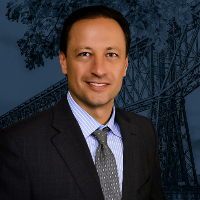 Dutchess County, NY Bankruptcy & Debt Lawyers
Dutchess County, NY Bankruptcy & Debt Lawyers
Sponsored Law Firm
-
 x
x

Click For More Info:
-
The Michelson Law Office
203 North Lasalle Street Suite 2100 Chicago, IL 60601» view mapBankruptcy, Chapter 7, Chapter 13 Chicago Bankruptcy Lawyer
When your finances are at stake, choose the best. Don't sink deeper in debt. Contact The Michelson Law Office
800-824-6431
Sponsored Lawyers
1-6 of 6 matches
Bankruptcy & Debt, Accident & Injury
Mr. Minotti received his Bachelors Degree from Pace University in 1995 and his Juris Doctor Degree from Pace University School of Law in 1998. Upon graduation, Tom was a member of the firm Minotti & Iaia, LLP in White Plains, New York primarily practicing in the area of Federal Civil Litigation and Personal Injury. In 2009, Tom opened the Law Offices of Thomas J. Minotti, P.C., with offices currently in the Hudson Valley and Saratoga Regions of New York. Mr. Minotti is licensed to practice in the States of New York and Connecticut and is admitted in the United States District Court for the Southern District of New York, United States District Court for the Northern District of New York, United States District Court for the District of Connecticut, United States Court of Appeals for the Second Circuit, United States Bankruptcy Court for the Southern District of New York and the United States Bankruptcy Court for the Northern District of New York. Mr. Minotti is a member of the New York State Bar Association and the Hudson Valley Bankruptcy Bar Association. Tom is an experienced attorney concentrating his practice in the areas of bankruptcy, mortgage modifications and civil litigation. His extensive knowledge of the current and ever-changing modification programs assures his clients the best chances of receiving mortgage modifications for which they are eligible. Tom has helped hundreds of families get a fresh start after suffering financial hardship by using the tools available through bankruptcy to rebuild their finances and by successfully negotiating mortgage modifications with lenders.
(more)Personal Injury, Accident & Injury, Motorcycle Accident, Slip & Fall Accident, Bankruptcy & Debt




 Abraham Michelson Chicago, IL
Abraham Michelson Chicago, IL AboutAbraham Michelson
AboutAbraham Michelson Practice AreasServices
Practice AreasServices


